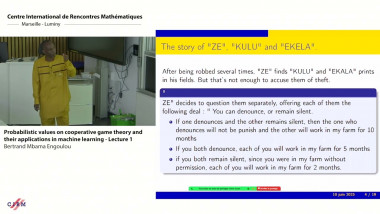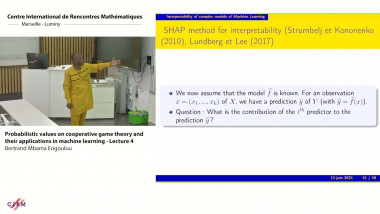
Probabilistic values on cooperative game theory and their applications in machine learning (1/4)
By MBAMA ENGOULOU Bertrand

Probabilistic values on cooperative game theory and their applications in machine learning (2/4)
By MBAMA ENGOULOU Bertrand

Probabilistic values on cooperative game theory and their applications in machine learning (3/4)
By MBAMA ENGOULOU Bertrand

Probabilistic values on cooperative game theory and their applications in machine learning (4/4)
By MBAMA ENGOULOU Bertrand

An introduction to conformal prediction and distribution-free inference
By Rina Foygel Barber











